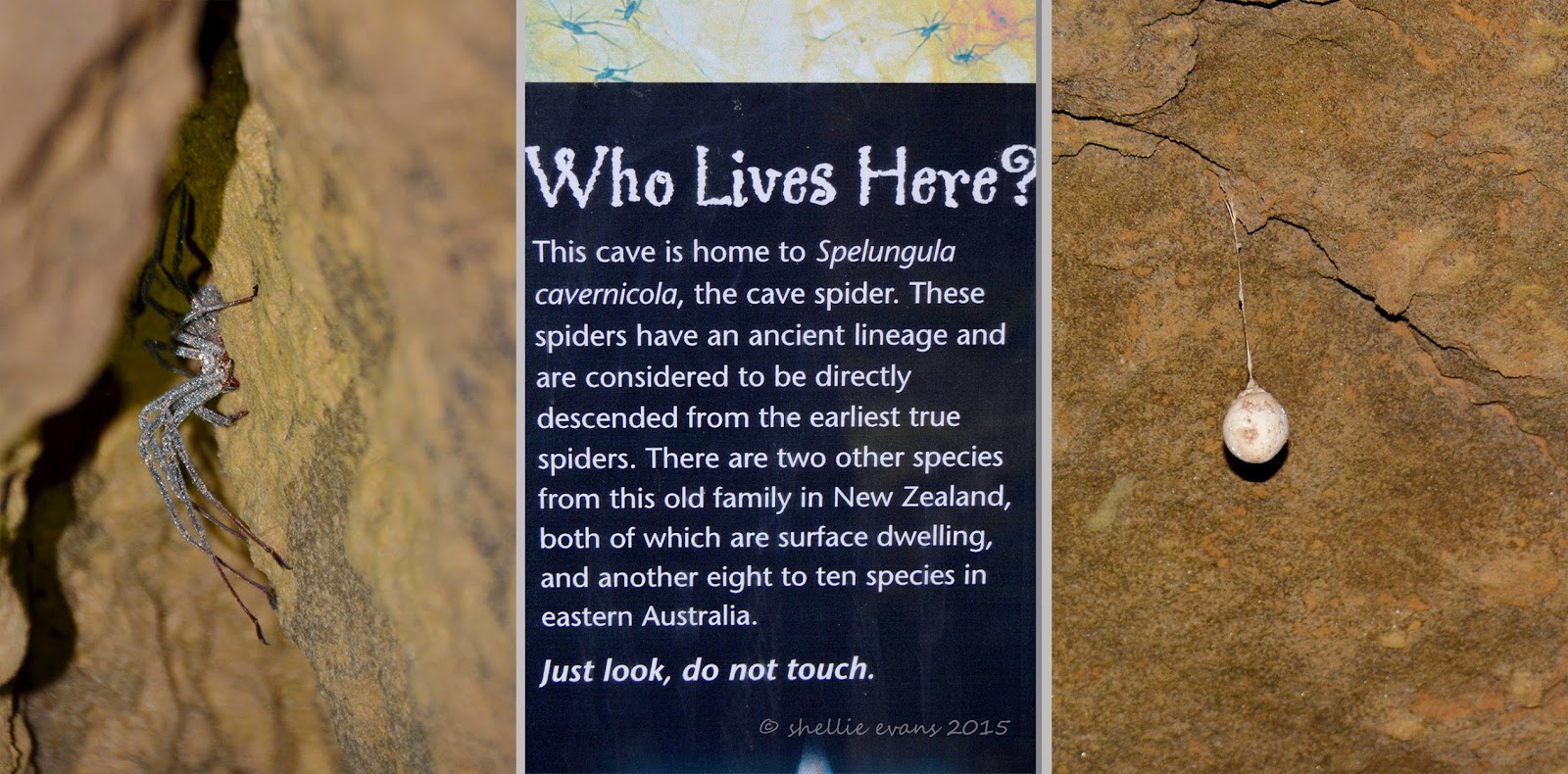This track has taken a beating from Cyclone Ita and once again we see how much destruction has taken place with huge mature trees uprooted along a small ridge above the track. The root plates are monsters, with a 4 or 5 metre diametre and we can see how easily they were ripped out of the ground. Most are very shallow rooted and have been ‘peeled’ off the rocky base they are growing on.
There would have been a huge amount of work to do to get the tracks back to working (walking) order and we know that there are still many back country tramping tracks closed because of windfall. I'm sure it would have been heart-breaking for DOC workers & volunteers to see the carnage around them and so much work ahead of them too.
The first cave is the Crazy Paving Cave, it has a wire fenced walkway and paving stones inside to protect the unusual formations on the floor.
Beneath the low overhangs on the side of the cave (and only visible with a torch) is the ‘crazing paving’ that the cave is named after. Crazing paving- they look more like large chocolate squares to me- has formed across the floor of the cave, it’s very old and very fragile and is thought to occur where deep fine sediment has dried out very slowly.
The cave is not very high, perhaps two metres or so and slowly decreases in height as you move into it. Shining the torch into the cracks and gaps in the ceiling not a few inches from our faces reveals the largest spiders you ever saw! Very special spiders, the information panel at the beginning tells us. Large egg sacks also hang from the ceiling.
Remember that it’s pitch black in here and I have to keep up with David whose keen to check out every nook and cranny for wetas & more spiders. Everytime he turns away I’m left in darkness, then he points the torch and there’s a spider or a weta scurrying away right near my head. I am not happy. Thankfully the wetas are nowhere near as large or as numerous as the ones we found in a cave on the Coromandel.
 |
| As if I would! |
We make our way to the next cave which is up a stairway to a the level above.
A wooden staircase leads down into the cave.
Box Canyon is one humongous cave, deep, tall, wide and dark. Very dark. From this angle you can also see how the cave got its name.
There are a number of side passages and David’s off exploring again. He squeezes through a passage opening and disappears around a corner. I’m left in darkness and I’m not impressed. Considering David’s aversion to small spaces, I’m surprised he’s so keen to check out the back recesses of the cave.
I take a photo looking back towards the entrance before we round a corner and move further on into the cave looking for glow-worms. There are no wetas or spiders back this far, they tend to like living around the entrance where there’s a bit of light and moisture to attract their prey. Once we’re around the corner we turn off the torch to check the ceiling for glow-worms.
It’s pitch black, not an ounce of light anywhere, you can’t see your hand in front of your face but as our eyes adjust and we look up at the ceiling we see a sprinkle of tiny pin-head sized lights spread across like a miniature Milky Way. Glow-worms! It’s always a delight to come across these tiny treasures when we explore. One day I’ll make the time to set up my camera & tripod to capture them in their natural state. If we turn the torch on them they switch off their lights so it'll need to be a long exposure in the darkness.
It’s too dark for me at the back so I stumble back towards the entrance, checking the sides for anything interesting. I find a tide line, at about my head height, on the stalactites that hang down from the top of the cave. I can’t say that’s very reassuring. It would be some huge downpour to fill this cave, imagine that, one monster swimming pool. At least there's a ladder to help you get out.
We climb back out of the cave, very impressed with what we’ve seen and this is only a small portion of what has been found and explored in the Honeycomb Hill cave system.












It certainly is an amazing area - we enjoyed our trip there too. So much to see and marvel at.
ReplyDeleteRobin and Jenny - Romany Rambler
Hi guys, hope you're enjoying the Eastern BOP- pity about the weather though (I sent some of our excess your way). We hope to return to Oparara before we're done with the Sth Island, I want to take the whole day to explore. Safe travels.
Delete